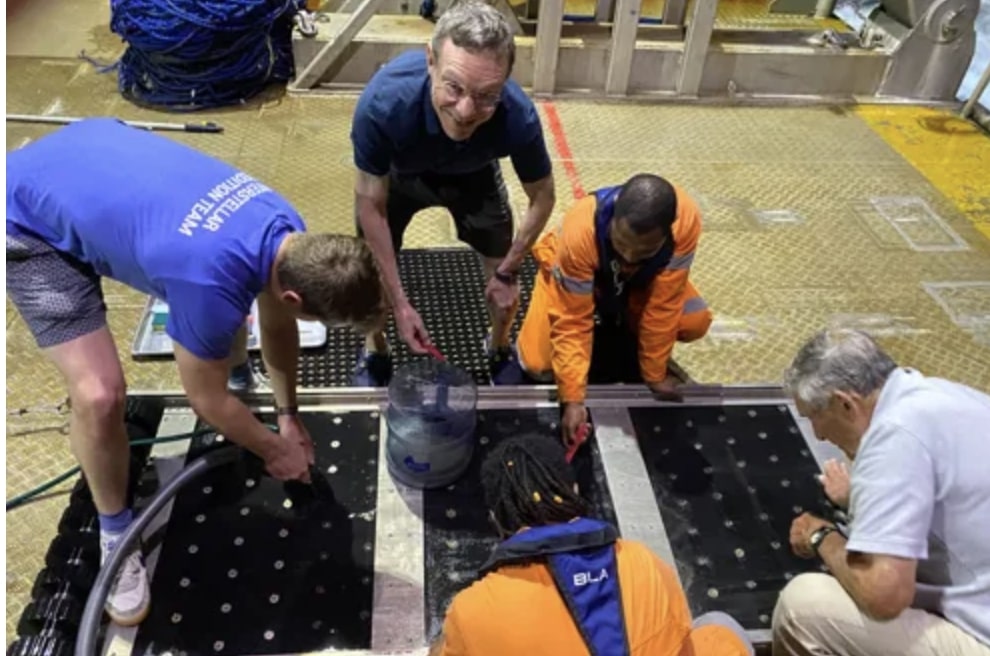Harvard professor Avi Leob team of two dozen researchers and support staff spent two weeks and 1.5 million dollars on bringing a tenth of a millionth of the debris mass from the IM1 interstellar meteor to the deck of their ship. They plan to analyze this material thoroughly in the coming weeks and publish the results in peer-reviewed journals.
They have about 30 milligrams of spherule material as of now. Based on the energy radiated from IM1’s fireball and the measured IM1’s speed, one can infer the mass of material entrained in the fireball to be about 500 kilograms. If we end up retrieving 50 milligrams over the remaining 3 days of the expedition, the total mass we collect would constitute one part in ten million of the fireball’s debris mass.

The hope is that it is easier to detect the junk and pollution of technological aliens rather than radio communications. The interstellar meteor IM1 had an estimated diameter of ∼ 0.45 meters and velocity of 60 km per second, but it was detectable when it entered and burned up within the atmosphere of the Earth. The estimated detection rate for interstellar meteors similar to CNEOS is at least ∼ 0.1 every year , resulting in a local density estimate of i ∼ one million per cubic AU or 10^22 per cubic parsec. They estimate 7.59 × 10^34 IM1-like objects bound by the thin disk of the Milky Way. However, if objects with the properties of IM1 were targeted towards habitable zones containing planets, they estimate 7.59 × 10^18 such objects. IM2 had a similar inferred number density to IM1 and a velocity of 40 km s-1 relative to the Local Standard of Rest. They estimate 2.78 × 10^34 IM2-like objects, and our estimate would be decreased to 2.78 × 10^18 if such objects were targeted towards habitable zones.
Humans makes tens of billions of tons of garbage and pollution every year. A space faring civilization that fully occupies one solar system would produce millions of times more garbage and junk than we do every year. We have only sent up a few thousand satellites and already have millions of bits of space debris.


US Space Command confirmed that meteor IM1 came from outside of the solar system. The tracking of the meteor was an unbounded hyperbolic orbit at . Therefore, it is an interstellar object.


Brian Wang is a Futurist Thought Leader and a popular Science blogger with 1 million readers per month. His blog Nextbigfuture.com is ranked #1 Science News Blog. It covers many disruptive technology and trends including Space, Robotics, Artificial Intelligence, Medicine, Anti-aging Biotechnology, and Nanotechnology.
Known for identifying cutting edge technologies, he is currently a Co-Founder of a startup and fundraiser for high potential early-stage companies. He is the Head of Research for Allocations for deep technology investments and an Angel Investor at Space Angels.
A frequent speaker at corporations, he has been a TEDx speaker, a Singularity University speaker and guest at numerous interviews for radio and podcasts. He is open to public speaking and advising engagements.
>>> Read full article>>>
Copyright for syndicated content belongs to the linked Source : Next Big Future – https://www.nextbigfuture.com/2023/06/30-milligrams-of-interstellar-meteor-is-being-analyzed.html































